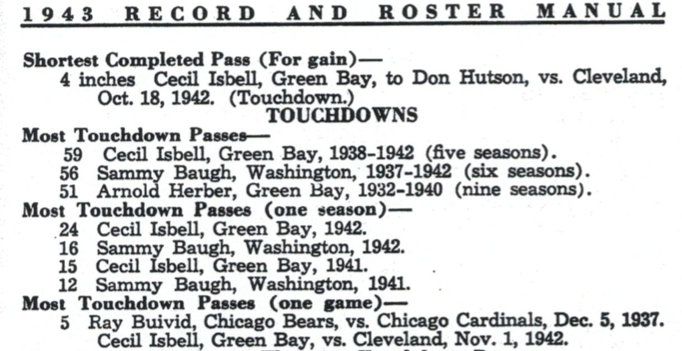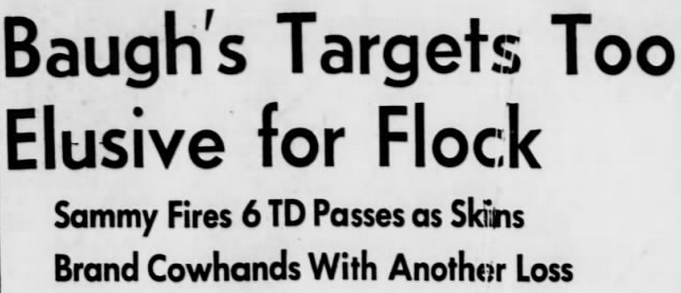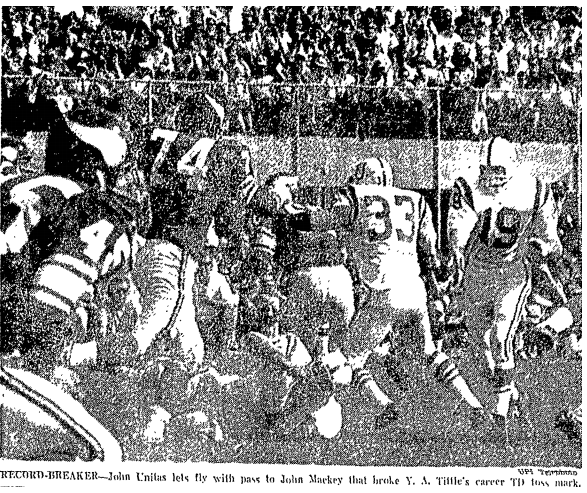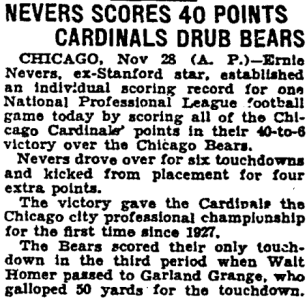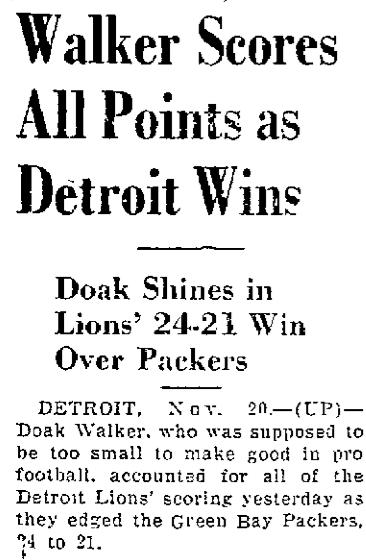Fear of Information Overload yesterday caused me to hold back some of the data I’d gathered for my post on NFL coaching hires in the 2000s. Believe it or not, there are a few other things I’d like to share — if I haven’t worn you out on the subject.
The first one I’ve already touched on, but I want to go into it in greater depth: the increasing number of coaches who never played in the NFL or AFL. More and more, it’s becoming a game of Career Coaches, guys who might have been college players but, as soon as they were done, focused on climbing the coaching ladder.
The most extreme example is Todd Haley, the son of a former NFL cornerback and personnel man, who played golf in college before his father, then with the Jets, brought him into the family business as a scouting-department assistant. Todd, of course, later served as the Chiefs’ coach for nearly three seasons (2009-2011) and is now the Steelers’ offensive coordinator.
In the old days, there were no erstwhile college golfers holding down NFL head-coaching jobs. There were only ex-pro players and, occasionally, men who had coached on the college level. As late as the ’50s and even into the ’60s, it wasn’t unheard of for an active player to also be an assistant coach (e.g. Tom Landry with the Giants). Heck, in 1961, just months after he’d led the Eagles to their last championship, Hall of Fame quarterback Norm Van Brocklin was pacing the sideline as the coach of the expansion Vikings.
You don’t see that sort of thing anymore. Maybe it’s because the coach’s life, with its long hours and year-to-year uncertainty, has limited appeal to today’s players. Or maybe it’s because players, if they play six, eight, 10 years or longer in the league, feel they’re too far behind the Career Coaches, have too much ground to make up, to have a realistic shot at landing good coaching jobs. So they go into business, where their name recognition can help them, or perhaps they end up in the media, talking about the game instead of teaching it.
There are all kinds of reasons, no doubt, why the situation has developed the way it has. But the numbers are inescapable: In 1970, the first season after the AFL-NFL merger, 16 of the 26 coaches in the league were former players; this season, only six of 32 are (not counting the Saints’ Sean Payton, whose three NFL games during the 1987 strike were of the replacement variety).
The circle of life — or what used to be the circle of life in pro football — has been broken. It’s no longer, for those who might desire it: playing career, coaching career, possibly head coaching career (either pro or college). It’s now playing career (coached mostly by Career Coaches) followed Something Else (because the Career Coaches have gotten too much of a jump). The 49ers’ Jim Harbaugh, the Rams’ Jeff Fisher, the Titans’ Ken Whisenhunt, the Panthers’ Ron Rivera, the Cowboys’ Jason Garrett — erstwhile NFLers all — are rare exceptions these days. And in the years to come, the exceptions figure to be even rarer. That, at least, has been the pattern over the last 40-odd years.
Check out the difference between the first 24 Super Bowls (1966-89 seasons) and the second 24 (1990-2013). After Super Bowl I, which featured Career Coaches Vince Lombardi (Packers) and Hank Stram (Chiefs), the next 23 had at least one coach, and sometimes two, who were former NFL or AFL players. The rundown:
Former NFL/AFL Players Who Coached a Team to the Super Bowl, 1966-89
[table width=”450px”]
SB,Coach\, Team,Opponent,Result
II,John Rauch\, Raiders,Packers,L\, 33-14
III,Don Shula\, Colts,Jets,L\, 16-7
IV,Bud Grant\, Vikings,Chiefs,L\, 24-7
V,Don McCaffrey\, Colts,Cowboys,W\, 16-13
V,Tom Landry\, Cowboys, Colts,L\, 16-13
VI,Tom Landry\, Cowboys,Dolphins,W\, 24-3
VI,Don Shula\, Dolphins,Cowboys,L\, 24-3
VII,Don Shula\, Dolphins,Redskins,W\, 14-7
VIII,Don Shula\, Dolphins,Vikings,W\, 24-7
VIII,Bud Grant\, Vikings,Dolphins,L\, 24-7
IX,Chuck Noll\, Steelers,Vikings,W\, 16-6
IX,Bud Grant\, Vikings, Steelers,L\, 16-6
X,Chuck Noll\, Steelers,Cowboys,W\, 21-17
X,Tom Landry\, Cowboys,Steelers,L\, 21-17
XI,Bud Grant\, Vikings,Raiders,L\, 32-14
XII,Tom Landry\, Cowboys,Broncos,W\, 27-10
XIII,Chuck Noll\, Steelers,Cowboys,W\, 35-31
XIII,Tom Landry\, Cowboys,Steelers,L\, 35-31
XIV,Chuck Noll\, Steelers,Rams,W\, 31-19
XV,Tom Flores\, Raiders,Eagles,W\, 27-10
XVI,Forrest Gregg\, Bengals,49ers,L\, 26-21
XVII,Don Shula\, Dolphins,Redskins,L\, 27-17
XVIII,Tom Flores\, Raiders,Redskins,W\, 38-9
XIX,Don Shula\, Dolphins,49ers,L\, 38-16
XX,Mike Ditka\, Bears,Patriots,W\, 46-10
XX,Raymond Berry\, Patriots,Bears,L\, 46-10
XXI,Dan Reeves\, Broncos,Giants,L\, 39-20
XXII,Dan Reeves\, Broncos,Redskins,L\, 42-10
XXIII,Sam Wyche\, Bengals,49ers,L\, 20-16
XIV,Dan Reeves\, Broncos,49ers,L\, 55-10
[/table]
Summary of the first 24 Super Bowls:
● 23 had at least one coach who was a former NFL/AFL player (95.8%).
● 7 had two coaches who were former players (29.2%).
● Super Bowl XX (Ditka-Berry) is the last one that had two coaches who were former players.
● 12 former players coached teams to the Super Bowl:
[table width=”150px”]
Coach,W-L
Noll,4-0
Shula,2-4
Landry,2-3
Grant,0-4
Reeves*,0-3
Flores,2-0
McCafferty,1-0
Ditka,1-0
Rauch,0-1
Gregg,0-1
Berry,0-1
Wyche,0-1
[/table]
*Had a fourth appearance (and loss) with the 1998 Falcons.
● 12-18 combined record (.400), 30 of 48 berths (62.5%).
● 6 former players won (Noll, Shula, Landry, Flores, McCafferty, Ditka).
On to the second half of Super Bowl history . . .
Former NFL/AFL Players Who Coached a Team to the Super Bowl, 1990-2013
[table width=”450px”]
SB,Coach\, Team,Opponent,Result
XXX,Bill Cowher\, Steelers,Cowboys,L\, 27-17
XXXIII,Dan Reeves\, Falcons,Broncos,L\, 34-19
XXXIV,Jeff Fisher\, Titans,Rams,L\, 23-16
XL,Bill Cowher\, Steelers,Seahawks,W\, 21-10
XLI,Tony Dungy\, Colts,Bears,W\, 29-17
XLIII,Ken Whisenhunt\, Cardinals,Steelers,L\, 27-23
XLVII,Jim Harbaugh\, 49ers,Ravens,L\, 34-31
[/table]
Summary of the last 24 Super Bowls:
● 7 had a coach who was a former player (29.2%).
● 0 had two coaches who were former players (0%).
● 6 former players coached teams to the Super Bowl:
[table width=”150px”]
Coach,W-L
Cowher,1-1
Dungy,1-0
Reeves,0-1
Fisher,0-1
Whisenhunt,0-1
Harbaugh,0-1
[/table]
● 2-5 combined record (.286); 7 of 48 berths (14.6%).
● 2 former players won (Cowher, Dungy).
Total for the 48 Super Bowls:
● 37 of 96 berths (38.5%).
● 14-23 combined record (.378).
● 6 former players won one of the first 20 Super Bowls (McCafferty, Landry, Shula, Noll, Flores, Ditka).
● 2 former players have won one of the last 28 Super Bowls (Cowher, Dungy).
You can see the trend, too, in the following list:
Former NFL/AFL Players Hired as Head Coaches in the 2000s
● 2000 (1 of 7 vacancies) — Jim Haslett/Saints.
● 2001 (3 of 8) — Marty Schottenheimer/Redskins, Dick LeBeau/Bengals, Herman Edwards/Jets.
● 2002 (4 of 8) — Steve Spurrier/Redskins, Tony Dungy/Colts, Marty Schottenheimer/Chargers, Mike Tice/Vikings.
● 2003 (1 of 5) — Jack Del Rio/Jaguars.
● 2004 (1 of 7) — Mike Mularkey/Bills.
● 2005 (0 of 3) — None.
● 2006 (4 of 10) — Herman Edwards/Chiefs, Art Shell/Raiders, Gary Kubiak/Texans, Jauron/Bills.
● 2007 (1 of 7) — Ken Whisenhunt/Cardinals.
● 2008 (1 of 4) — Jim Zorn/Redskins.
● 2009 (1 of 11) — Mike Singletary/49ers.
● 2010 (0 of 3) — None.
● 2011 (5 of 8) — Jim Harbaugh/49ers, Leslie Frazier/Vikings, Jason Garrett/Cowboys, Mike Munchak/Titans, Ron Rivera/Panthers.
● 2012 (2 of 7) — Jeff Fisher/Rams, Mike Mularkey/Jaguars.
● 2013 (1 of 8) — Doug Marrone/Bills.
● 2014 (1 of 7) — Ken Whisenhunt/Titans.
Note: Interim coaches not included.
● Total: 26 of 103 hires (25.2%).
● 1 has won the Super Bowl (Dungy).
● 3 have taken a team to the Super Bowl (Dungy, Whisenhunt, Harbaugh). Record: 1-2, .333.
● That’s 3 Super Bowl berths out of 28 (10.7%).
Where does this leave us? Well, I’m not convinced the NFL would be radically different if there were more former players serving as head coaches. But I am convinced the game would be better. Why? Because there are undoubtedly some very good football minds that aren’t going into coaching, many more than before. And just as there are never enough good quarterbacks, there are never enough good coaches. Remember: 12 of the first 20 Super Bowls were won by teams coached by ex-players.
Source: pro-football-reference.com

